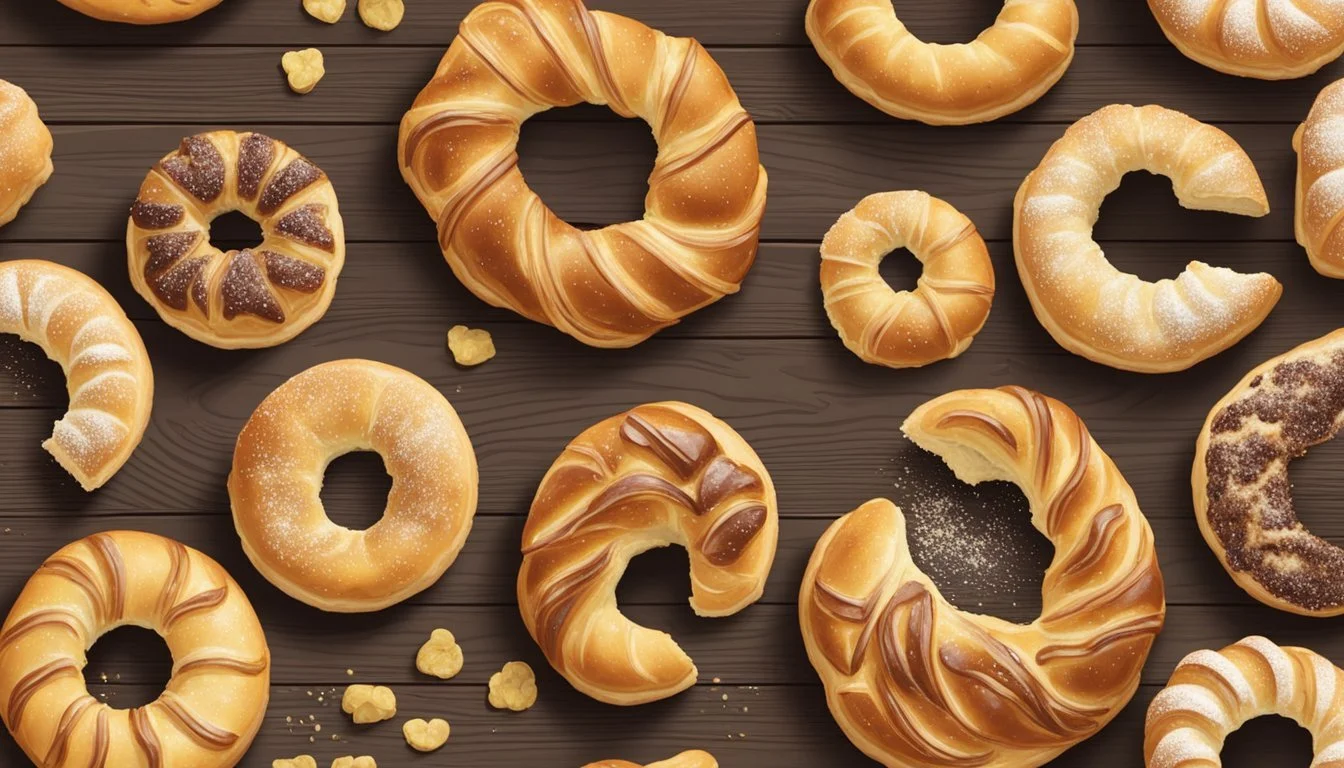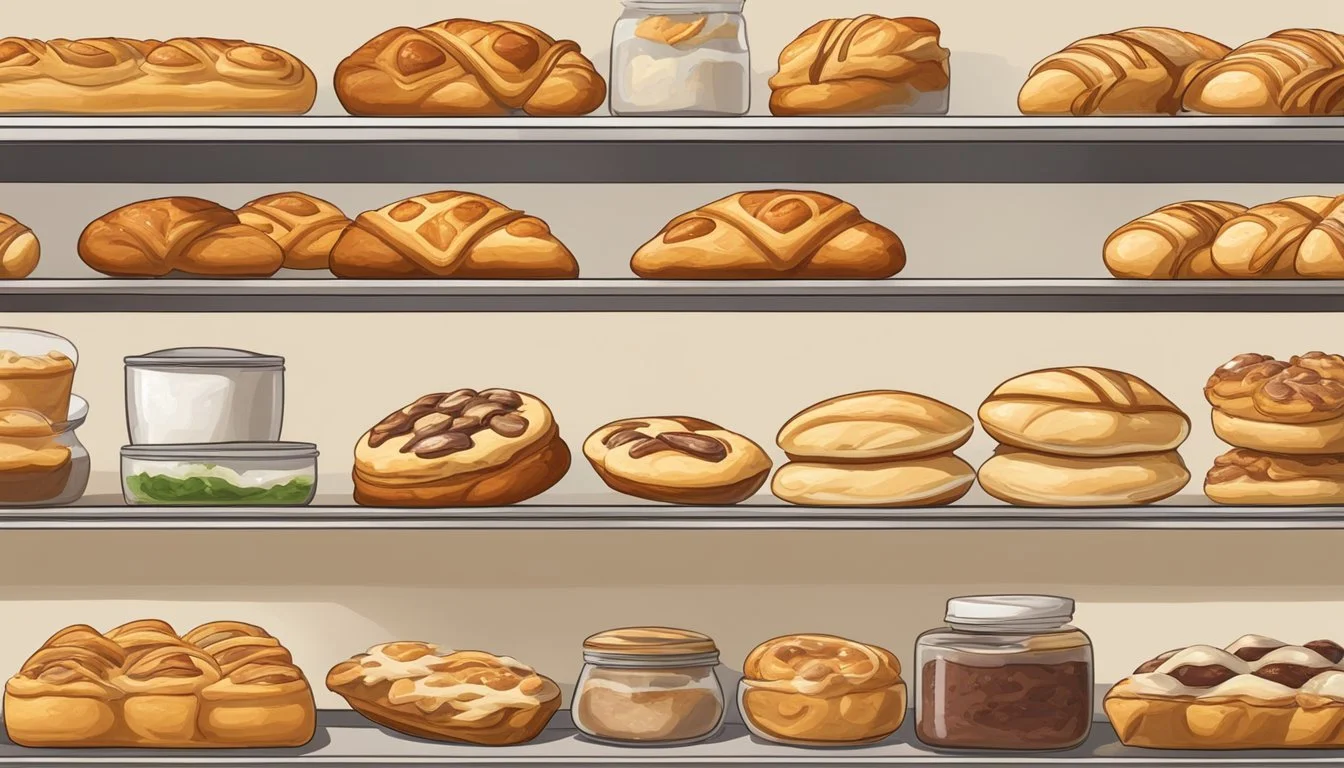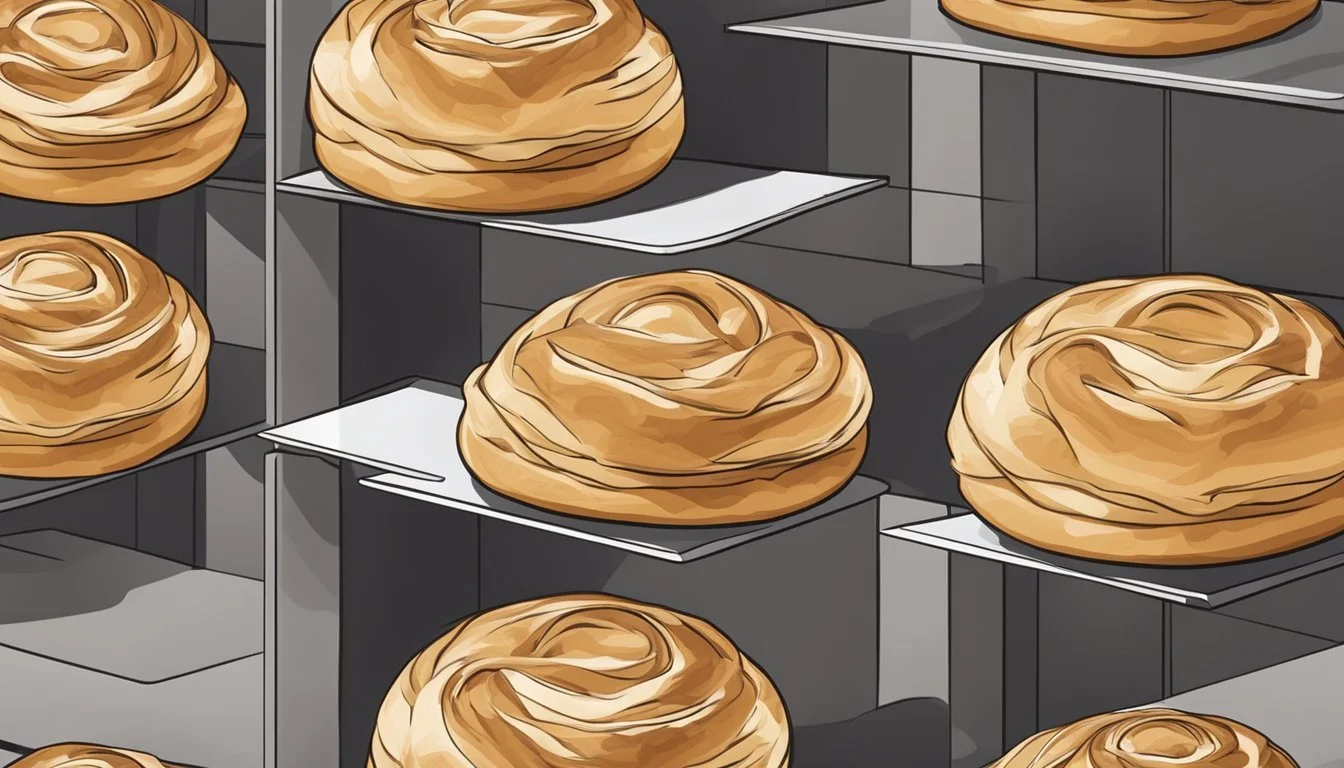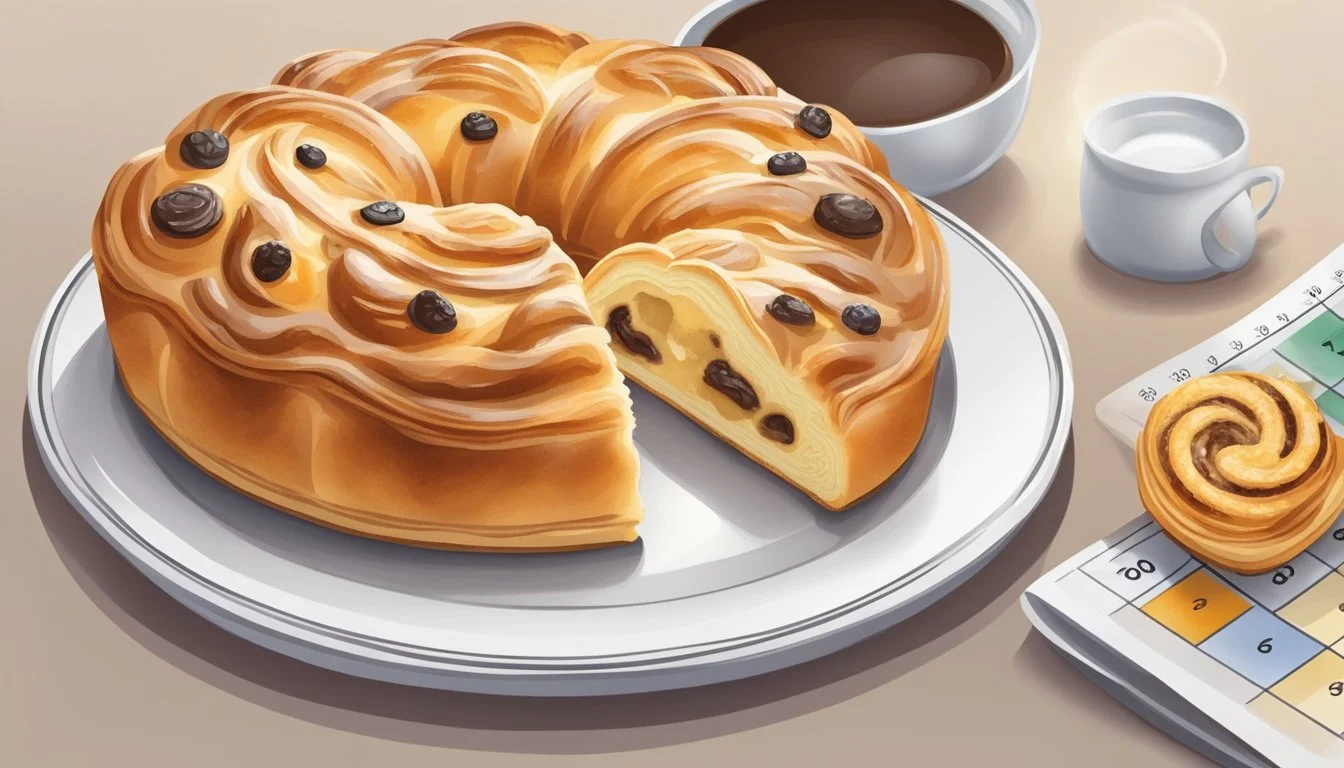Do Danish Pastries Go Bad?
Shelf Life and Storage Tips
Danish pastries, beloved for their flaky layers and delightful fillings, can indeed go bad. Typically, Danish pastries last up to 24 to 48 hours at room temperature. To ensure they remain fresh for a longer period, refrigeration is recommended. When stored in the fridge, Danish pastries can last up to seven days.
Storage plays a crucial role in maintaining the taste and texture of these pastries. It is best to cover individual pastries in plastic wrap and place them in zip-lock bags before refrigerating. Freezing pastries before baking is another effective method for preserving their quality.
Changes in texture and taste are clear indicators of spoilage. Mold growth, unusual odors, or any unexpected changes in texture signal that the Danish pastries are no longer safe to consume. Keeping an eye on these signs helps maintain the enjoyment of these delicious treats.
Understanding Danish Pastries
Danish pastries are renowned for their flaky, buttery layers and diverse fillings. These pastries stand out due to their unique composition and the intricate process involved in making them.
Composition and Varieties
Danish pastries are made from a laminated dough containing key ingredients such as butter, flour, eggs, milk, and sugar. The lamination process creates multiple thin layers, resulting in a tender and flaky texture.
Various fillings are commonly used in Danish pastries, including fruit, chocolate, nuts, custard, cream cheese, and cheese filling. These diverse options offer a wide range of flavors, appealing to different preferences.
The dough itself is rich in butter, which is crucial for achieving the pastry’s characteristic flakiness. The yeast in the dough helps with rising and developing gluten, giving the pastry structure and lightness.
The Process of Making Danish Pastry
Creating Danish pastries involves a meticulous process of folding and layering. Initially, a butter block is enclosed in the dough, which is then rolled out and folded multiple times to form the laminated structure.
The dough undergoes several rounds of folding and resting, each step ensuring that the butter is evenly distributed. This results in multiple thin layers of dough separated by butter.
When baked, the water in the butter turns to steam, causing the layers to separate and puff up. This creates the distinct airy and flaky texture.
Traditional Danish pastries are often shaped into spirals, pockets, or braids before being filled and baked. Each shape provides a different texture and eating experience, enhancing the overall appeal of these delectable treats.
Shelf Life and Freshness
Both the preservation and visual identification of Danish pastries are crucial for maintaining their delicious, fresh qualities. Freshness is impacted by multiple factors, and recognizing spoilage is essential for safety.
Factors Affecting Freshness
The shelf life of Danish pastries can be influenced by various factors:
Moisture and Water Content: Higher moisture content can cause pastries to go stale faster.
Air Exposure: Storing pastries in airtight containers helps to keep them fresher for longer periods.
Storage Temperature: Refrigeration can extend the shelf life up to a week, while freezing can preserve them for up to two months.
Proper storage techniques play a key role in maintaining the freshness of Danish pastries. Utilizing airtight containers and refrigerating them are practical steps to extend their shelf life.
Identifying Spoilage
Recognizing spoiled Danish pastries involves several indicators:
Mold Growth: Visible mold is a clear sign of spoilage.
Foul Odor: Unpleasant smells indicate that the pastry has gone bad.
Texture Changes: Hardened texture or excessive dryness can signify that the pastry is no longer fresh.
Discoloration: Changes in color can also be an indicator of spoilage, particularly for cheese-filled varieties.
Being aware of these signs helps in ensuring that only fresh pastries are consumed, ensuring safety and taste. Regularly checking for these markers can prevent the consumption of spoiled pastries.
Optimal Storage Conditions
Proper storage conditions for Danish pastries can significantly extend their shelf life and maintain their freshness. Key factors include air exposure, temperature, and the type of container used to store them, whether at room temperature, in the fridge, or in the freezer.
At Room Temperature
Danish pastries can be kept at room temperature if they are to be consumed within the first 24-48 hours. Air exposure is a critical factor here. Pastries should be placed in a paper bag to allow limited air circulation while preventing them from getting too moist or too dry. Room temperature storage is best suited for pastries with minimal perishables like fruit fillings or plain varieties. Cheese Danish, in contrast, should be refrigerated to avoid spoilage.
Refrigeration Strategies
For longer-lasting freshness, refrigerating Danish pastries is recommended. Cheese Danish and other pastries with perishable toppings benefit most from this method. Store these pastries in an airtight container to reduce air exposure and maintain their texture and flavor. The ideal refrigeration temperature should range between 34°F (1°C) and 38°F (3°C). It’s crucial not to store them beyond 5-7 days, as even in optimal conditions, they can lose their quality and become stale.
Freezing and Freezer Storage
Freezing Danish pastries is an excellent way to extend their shelf life for up to 2 months. Before freezing, wrap each pastry individually in plastic wrap followed by aluminum foil to prevent air exposure and freezer burn. Place the wrapped pastries in an airtight container or heavy-duty freezer bag. To freeze cheese Danish effectively, ensure the pastry is completely cool before wrapping and freezing. When ready to consume, thaw the pastries in the refrigerator overnight and reheat in an oven at 350°F (175°C) for 10-15 minutes to restore their fresh-baked quality.
Best Practices for Extending Shelf Life
To maximize the shelf life of Danish pastries, careful handling and appropriate packaging are essential. Proper defrost and reheating methods also play a crucial role in maintaining their quality.
Proper Handling and Packaging
Proper storage begins with good handling. Always cool Danish pastries completely before storing to prevent condensation, which can lead to sogginess.
Wrap each pastry tightly in plastic wrap or aluminum foil to lock in freshness. Place the wrapped pastries in an airtight container to avoid exposure to air, which can dry them out.
Label and date all stored pastries. This helps keep track of their freshness and ensures proper rotation. For long-term storage, consider freezing.
Freeze the pastries individually on a baking sheet first, then transfer to freezer-safe bags or containers to maintain quality.
Thawing and Reheating Methods
Careful thawing is necessary to preserve texture and taste. To defrost, transfer frozen pastries to the refrigerator and let them thaw overnight. This slow defrosting process helps retain moisture.
For quick use, thaw at room temperature for a few hours while avoiding direct sunlight or heat sources.
When reheating, use an oven set to 350°F (175°C) for 10-15 minutes. This method restores crispiness effectively. Alternatively, a toaster oven can provide similar results.
Avoid microwaving pastries as it can make them tough and chewy. For best results, reheat only the portions you plan to consume immediately.
Food Safety Considerations
Proper storage and recognizing signs of spoilage are crucial for maintaining the safety and quality of Danish pastries. Being aware of bacteria growth and preventing contamination ensure a longer shelf life and safe consumption.
Understanding Bacteria Growth
Bacteria growth is a primary concern in the spoilage of Danish pastries. Temperature control is essential to slow down this process. Room temperature storage is suitable for up to 48 hours but offers no protection against bacterial growth beyond this period.
When Danish pastries are refrigerated at 40°F (4°C) or below, bacterial activity is significantly reduced. This method can extend their freshness for up to 7 days. If any unusual odor, mold growth, or texture changes are noted, it indicates that the pastries may have gone bad and should be discarded promptly.
Freezing Danish pastries can further inhibit bacteria, allowing storage up to 2 months. However, to maintain quality and ensure food safety, pastries should be stored in airtight containers to prevent freezer burn and contamination.
Prevention of Contamination
Preventing contamination starts with proper handling and storage practices. Danish pastries should be kept in airtight containers to protect them from airborne contaminants and moisture. At room temperature, storing in paper bags can help maintain their texture while limiting exposure.
In the refrigerator, ensuring a consistent temperature of 34-38°F (1-3°C) helps keep the pastries fresh. Regular inspection for signs of spoilage, such as mold growth, sour smell, or texture changes, should be performed.
Hygiene practices such as clean hands and utensils when handling pastries reduce contamination risks. When reheating, bring pastries to a safe internal temperature by using an oven set to 350°F (175°C) for about 10-15 minutes.
Enjoying Danish Pastries
Danish pastries are versatile treats that can shine at breakfast or as a dessert. Their buttery layers and sweet fillings make them delightful on their own or with various accompaniments.
Serving Recommendations
Freshly Baked Danish Pastries are best enjoyed within 24-48 hours at room temperature or up to a week when refrigerated. For maximal enjoyment, serve them slightly warmed to enhance the flakiness and aroma.
Consider adding a touch of glaze or whipped cream on top for extra indulgence.
For breakfast, pair a Danish pastry with fresh fruit for a balanced start to the day. Apples, berries, or citrus fruits complement the richness of the pastry well.
If serving as a dessert, accompanying the pastry with a scoop of vanilla ice cream or a dollop of cream can elevate the experience.
Pairing Suggestions
A well-chosen beverage can enhance the flavors of a Danish pastry. Coffee and tea are classic pairings, with the robust notes of coffee balancing the sweetness of the pastry.
Opt for a light roast coffee to complement fruity fillings or a darker roast for richer toppings.
For tea lovers, a black tea, such as Earl Grey, pairs well, while herbal teas like chamomile can offer a more nuanced experience.
For an elegant touch, consider pairing your Danish pastries with a sparkling wine or champagne during special occasions.








